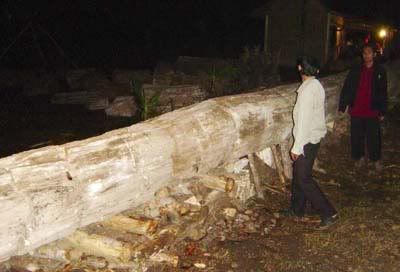PASKIBRA SMA NEGERI 1 SAJIRA
Replace these every slider sentences with your featured post descriptions.Go to Blogger edit html and find these sentences.Now replace these with your own descriptions.This theme is Bloggerized by Lasantha - Premiumbloggertemplates.com.

GURU GURU DAN ANGGOTA OSIS
para guru dan sejumlah osis melakukan poto bersama sesudah pengukuhan osis tahun ajaran baru.

SALAM SALAMAN ANTARA GURU DAN OSIS AJARAN BARU
setelah disah kan OSIS ajaran baru para guru dan staptata usaha memberikan slamat kepada osis periode baru.

Pertandingan Basketball putra tingkat SMA se Kabupaten Lebak
aku merasa jari-jariku hanya berjumlah tiga, oh indahnya pantai anyer yang sukar dilupakan.

kibra pengibaran hari PGRI di kecamatan sajira
setelah kami melaksanakan pengibaran di kecamatan sajira kami selaku pengibar terpenting dalam sebuah pengibaran bendera merah putih langsung melaksanakan poto bersama-sama.

pengibaran bendera
pengibaran bendera merah putih pada hari guru di kecamatan sajira,pengibaran ini melibatkan siswa siswi SMAN 1 sajira.

Bagja dagang somay
pada waktu aku mengikuti acara gathering party bloger se-provinsi banten, aku kehabisan bekal sehingga memaksa aku jualan somay. lumayan yang penting halal.

Acara Gathering Party Blogger Se-Banten 2011
si abah (berkaus merah)tengah mengawasi kontingen kabupaten lebak yang sedang makan siang, sementara kang sakir sang ajudan sedang teteleponan memanggil rekan-rekan yang masih bebecekan di pinggir pantai.

Proyeksi SMA Negeri 1 Sajira 2025
aku hanya bisa berharap, jikalau nanti pada masa yang akan datang sekolahku bisa semegah dan semodern bangunan ini.

This is featured post 4 title
Replace these every slider sentences with your featured post descriptions.Go to Blogger edit html and find these sentences.Now replace these with your own descriptions.This theme is Bloggerized by Lasantha - Premiumbloggertemplates.com.

This is featured post 4 title
Replace these every slider sentences with your featured post descriptions.Go to Blogger edit html and find these sentences.Now replace these with your own descriptions.This theme is Bloggerized by Lasantha - Premiumbloggertemplates.com.

Pak Budi dalam Workshop IT di Kampus STKIP Setia Budhi Rangkasbitung
Replace these every slider sentences with your featured post descriptions.Go to Blogger edit html and find these sentences.Now replace these with your own descriptions.This theme is Bloggerized by Lasantha - Premiumbloggertemplates.com.

Kamis, 15 Maret 2012
somali women force into exile
 22.45
22.45
 SMA NEGERI 1 SAJIRA
SMA NEGERI 1 SAJIRA
ASEAN Political Security Community
 22.39
22.39
 SMA NEGERI 1 SAJIRA
SMA NEGERI 1 SAJIRA
sekilas tentang ASEAN
 22.36
22.36
 SMA NEGERI 1 SAJIRA
SMA NEGERI 1 SAJIRA
AIMS AND PURPOSES
- To accelerate the economic growth, social progress and cultural development in the region through joint endeavours in the spirit of equality and partnership in order to strengthen the foundation for a prosperous and peaceful community of Southeast Asian Nations;
- To promote regional peace and stability through abiding respect for justice and the rule of law in the relationship among countries of the region and adherence to the principles of the United Nations Charter;
- To promote active collaboration and mutual assistance on matters of common interest in the economic, social, cultural, technical, scientific and administrative fields;
- To provide assistance to each other in the form of training and research facilities in the educational, professional, technical and administrative spheres;
- To collaborate more effectively for the greater utilisation of their agriculture and industries, the expansion of their trade, including the study of the problems of international commodity trade, the improvement of their transportation and communications facilities and the raising of the living standards of their peoples;
- To promote Southeast Asian studies; and
- To maintain close and beneficial cooperation with existing international and regional organisations with similar aims and purposes, and explore all avenues for even closer cooperation among themselves.
FUNDAMENTAL PRINCIPLES
- Mutual respect for the independence, sovereignty, equality, territorial integrity, and national identity of all nations;
- The right of every State to lead its national existence free from external interference, subversion or coercion;
- Non-interference in the internal affairs of one another;
- Settlement of differences or disputes by peaceful manner;
- Renunciation of the threat or use of force; and
- Effective cooperation among themselves.
ASEAN COMMUNITY
ASEAN CHARTER
Di buka Konjen Indonesia di Beijing
 22.33
22.33
 SMA NEGERI 1 SAJIRA
SMA NEGERI 1 SAJIRA
Kamis, 09 Februari 2012
Senin, 28 November 2011
Sejaran Tubagus Buang
 02.34
02.34
 SMA NEGERI 1 SAJIRA
SMA NEGERI 1 SAJIRA
Struktur Kepengurusan Eksul basketball SMAN 1 Sajira
 02.16
02.16
 SMA NEGERI 1 SAJIRA
SMA NEGERI 1 SAJIRA


.gif)



